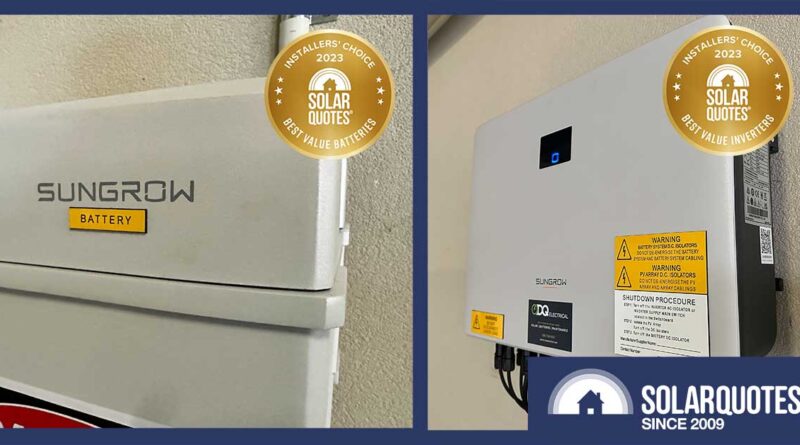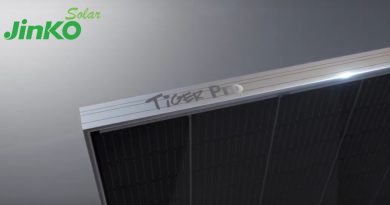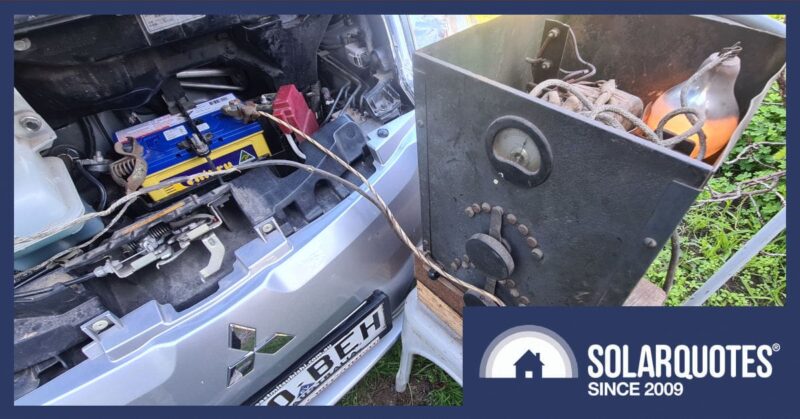An Installer’s Take On Sungrow Inverters & Batteries
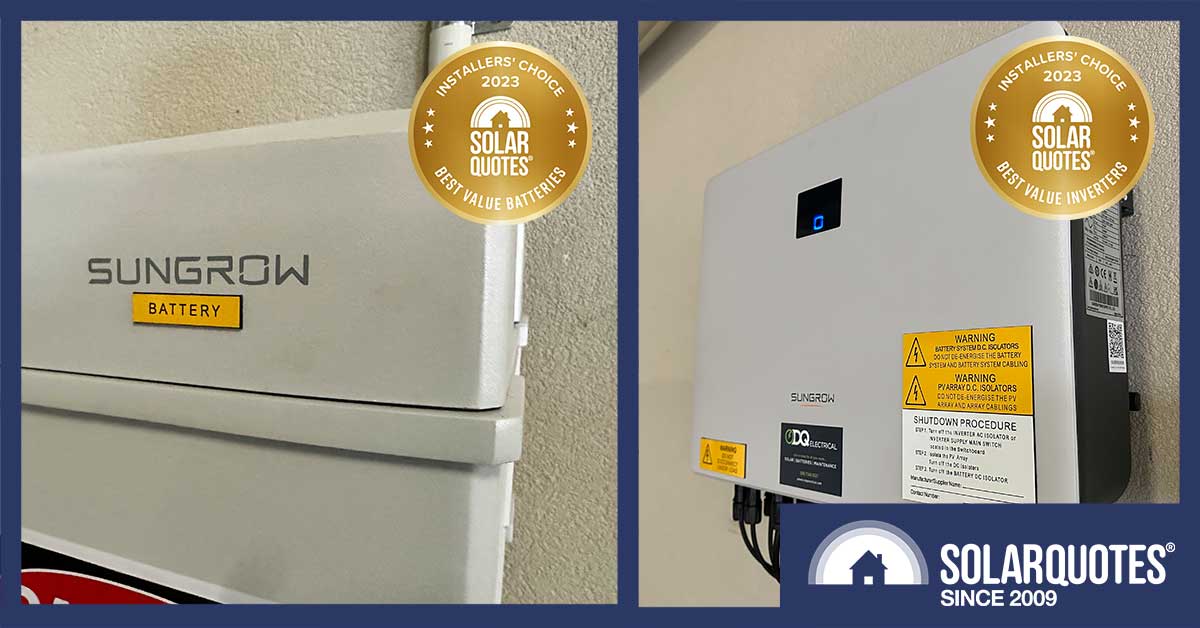
Sungrow inverters and batteries are a popular choice for Australian solar systems thanks to their proven performance and accessible pricing. I thought I’d take a closer look at what makes Sungrow inverters such great value, along with some of their limitations.
Sungrow Inverters – Overview
So, why are Sungrow inverters so highly regarded despite their low price point? What makes them better than other budget inverters? In short, it’s about having a solid foundation; i.e., 10 years of reliable grid connect inverters in Australia with a good technical support service to match.
However, there have been a few issues with Sungrow hybrid inverters and batteries recently that have made some installers a bit gun-shy.
I know firsthand of a battery hybrid that is performing inconsistently, and I’m aware of another that needed three visits and several warranty components to eventually find the source of the problem. Of course, installers with problems will always squeal pretty loudly, so I expect the disquiet I’ve heard is probably not happening on a massive scale.
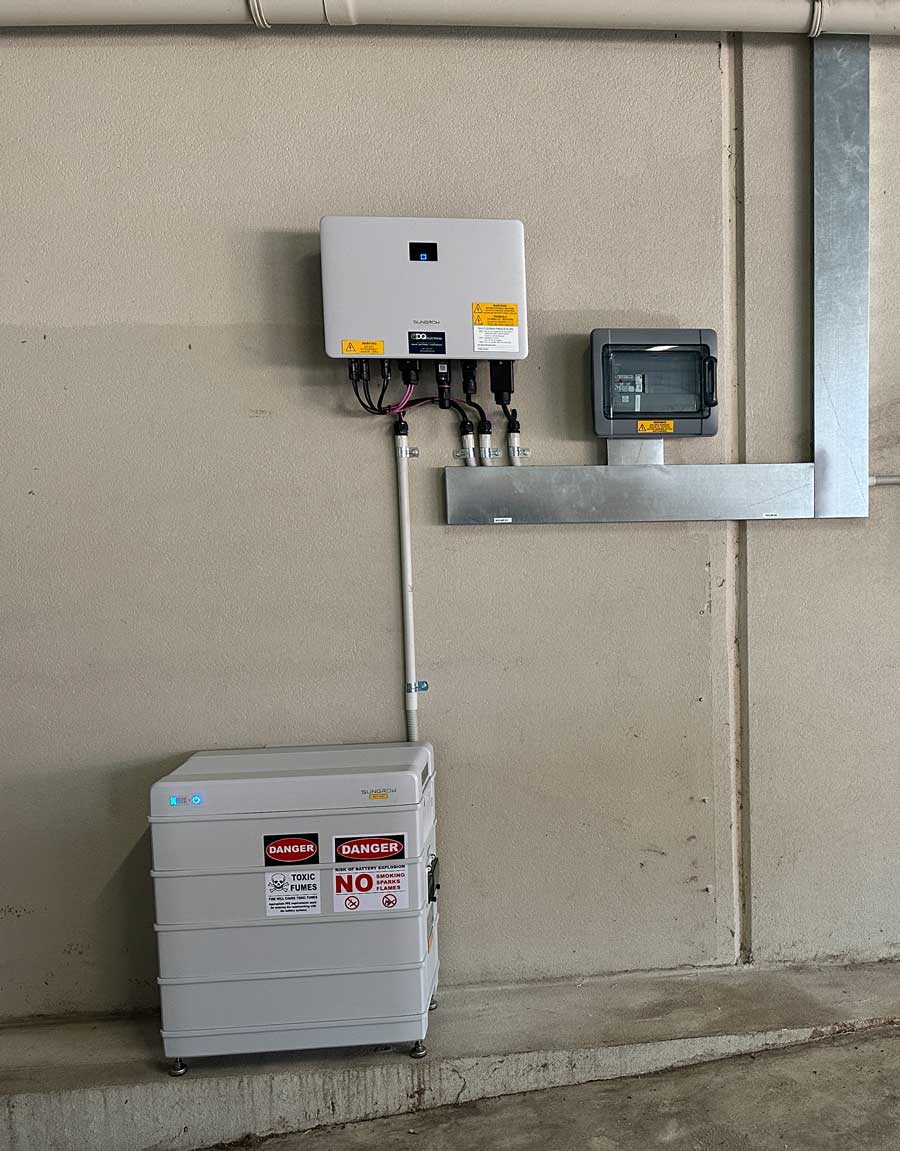
12.8 kWh of Sungrow battery (4 modules) and a single-phase Sungrow hybrid inverter. This one’s owned by Finn.
Sungrowing Pains – The Price Of Success
From what I can gather, Sungrow has enjoyed enormous success recently, but this success has come with some growing pains. With multiple new and inherently more complex battery hybrid systems being rolled out, there will always be glitches and failures. Success also means Sungrow will need more people to answer phones, troubleshoot and deal with new installers doing their first job with unfamiliar equipment. But these relatively small issues are to be expected and should be temporary.
When I recently asked around about what installers want from batteries, my informal poll resulted in Sungrow ticking all the boxes with 27% of installers – almost double that of perennial favourite, Tesla. This was far and away the greatest single block of votes (42), with another 9% going to the option entitled “it just has to work and not cause callbacks”. So, it’s not hard to draw the conclusion Sungrow already has a solid reputation for reliability.
I’ve certainly had a good run with the earlier generation of low-voltage hybrid machines that still had a basic screen to program them. I expect they’ll soon have the more advanced units up to the same high standard, once we’ve done the umpteenth firmware update and got it back online. Again.
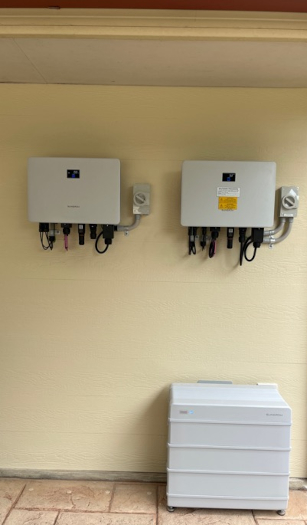
Hybrid and AC coupled solar inverter, with a mess of plugs to terminate them.
Other Features Of Sungrow Inverters
Sungrow offers a good monitoring platform, and it’s readily commissioned provided you remember to set them up on the Australian server; because that’s a trap for young players. The warranty is also good, which we’ve already looked at in detail in our deep dive into Sungrow inverter warranties.
Sungrow batteries also deserve a special mention as really well-resolved, easy-to-handle, modular packages. There’s a robust alloy casing with fast, foolproof connections, meaning you’ll have the ability to grow your capacity incrementally.
The WiFi access isn’t terrible, insomuch as they have a standard dongle that’s not hard to set up, as well as an optional 4G unit that accepts a SIM card for mobile access – meaning you don’t need local internet service. However, the dongles only have a two-year warranty, which I consider a rort, having had to drive a four-hour roundtrip to replace one.
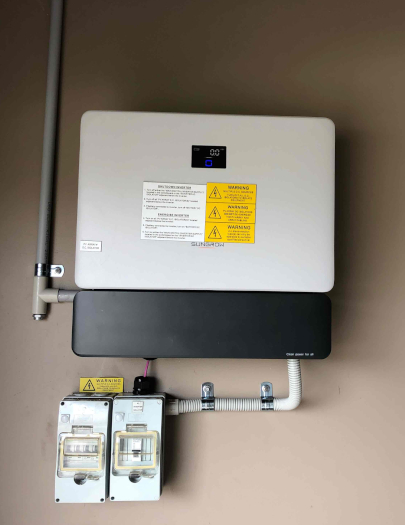
Now with much-needed cover to neaten up the wiring.
Another good thing about Sungrow’s inverter lineup is the option to choose from several capable hybrids – including 3-phase hybrids – so there’s a Sungrow inverter for (almost) everyone.
Finally, the ability to have 20kW of solar on a single-phase property is worth mentioning.
How to install 20 kW of solar on a single-phase property
With AC coupling available for more solar on backup circuits, it’s now possible to install a 5kW hybrid and 5kW standard inverter and then add 20kW of solar panels on the roof of a single-phase property in most of Australia – something unheard of just a few years ago.
The standard single-phase smart meter is also a single pole device with a CT coil. That’s a nice compact unit to put into ever more crowded switchboards, unlike the CHiNT whole current unit for 3-phase applications. Perhaps the best option to be announced recently is a smart meter with external coils that will measure other legacy solar on the premises. This helps the Sungrow monitoring platform display data correctly instead of confusing itself and the end user.
So, What’s The Catch?
All this extra capacity on the backup circuit masks a small problem. Hybrid backup circuits are limited to the throughput rating of the inverter, regardless of if there is grid power available or not. The inverter doesn’t have a higher “pass through” rating when grid-connected, so whatever is on the emergency circuit is effectively throttled by the inverter.
It’s not a problem for the average single fridge and lights scenario, but this limited capacity means the backup circuit can struggle with high inrush loads such as induction motors. The motor in an extra fridge, freezers, air conditioners or especially household water pressure pumps will draw up to seven times their running current when starting.
There are workarounds, and savvy installers will alleviate this with a changeover switch or contactor, which can serve a few functions:
- When the power fails, a manual changeover means you have to physically acknowledge you’re running on battery to turn things over to the backup circuit, so you can curb consumption and save the battery.
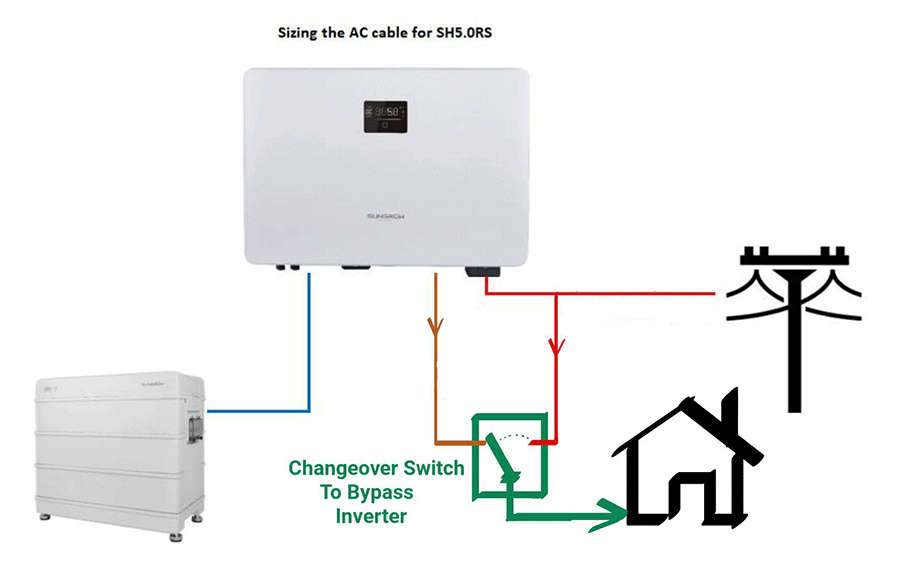
A manual changeover switch bypasses the inverter entirely.
- A contactor can carry large loads as a bypass, which drops out when the power fails and leaves you with essential items segregated at a different sub board.
- A bypass of either kind can offer easily diagnosable troubleshooting over the phone. So, if the inverter fails altogether, power can be restored to ordinary grid supply without tools or expertise.
Hybrid Inverters Need BIG cables
Installers need to be aware of a hybrid’s demands on the wiring. With a combined load of 27A for the backup and a further 30A to force charge the battery from the grid, a nominal 5kW inverter can impose a 13kW load on the AC supply. This means your default rule-of-thumb solar inverter wiring at 6mm² and 32 amps is about half of what’s legally required.
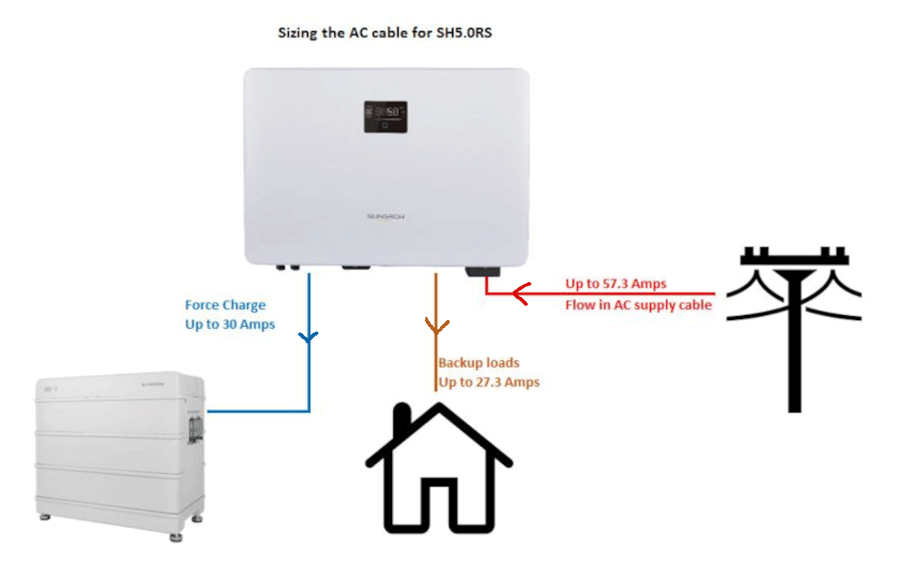
If your breaker keeps tripping since you had a DC coupled battery installed, this might be why. A 57 amp load needs a 63 amp breaker and a 16mm² cable, the same size as many house supplies from the street.
Plugged Connections Are Fiddly
The only other bugbear is plugged connections can be fiddly to terminate, especially when hybrids require very large supply cables that must be broken down into small cables. It’s a trap for some, but really forces you to have just the right flexible cable, the correct bootlace terminations and the right amount of patience to get it all together. In other words, it’s time-consuming but doable.
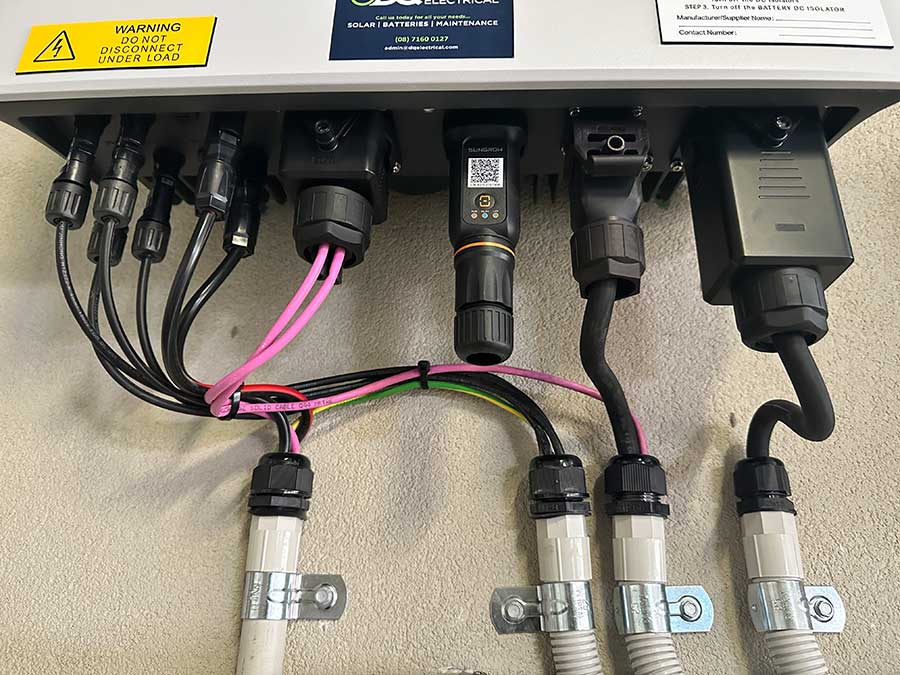
Sungrow Inverters and Batteries: Great value for money.
Considering you can install a 6.6 kW solar system, a Sungrow hybrid inverter, and 10 kWh of Sungrow battery capacity for about the same price as a single Tesla Powerwall, Sungrow is a compelling proposition for many Australian homeowners. They are (mostly) well-designed and well-supported bits of kit that installers enjoy installing.
Sungrow recently won gold for ‘Best Value Inverters in Australia in 2023‘ and ‘Best Value Batteries in Australia in 2023‘ in this year’s SolarQuotes Installers’ Choice Awards.
Original Source: https://www.solarquotes.com.au/blog/installers-view-sungrow/

